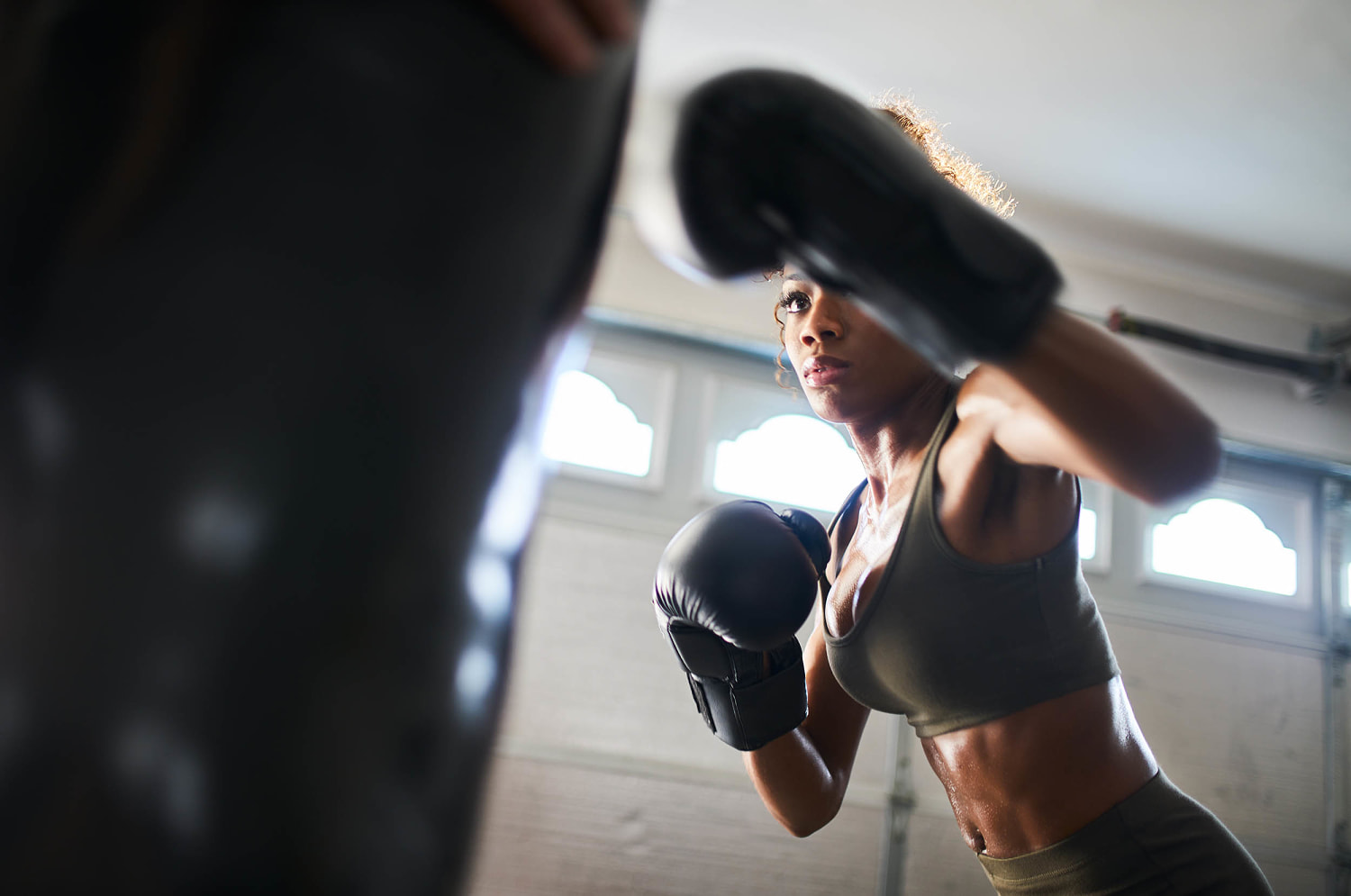
As a boxing instructor, I find that many of my clients take up the sport for its : It can serve as an outlet for releasing anger, reducing stress and increasing self-esteem. Something that I’ve noticed, though, is a misconception around the physical benefits. Before taking a class, people often assume that boxing mainly improves .
But the mechanics of the sport requires shifting the weight in your lower body and engaging your core, resulting in a total-body workout that not only builds overall strength, but can help with toning and weight management, too. I especially want women to know this for two reasons: to squash any intimidation when it comes to trying the workout and to dispel the myth that the sport will make you “bulky,” a common misconception about . Let’s dive into the benefits of boxing, plus boxing basics for beginners and some free workouts to throw some punches at home.

Boxing originated as a combat sport that dates back to roughly 4000 BC, per , when it was used by the Greek and Roman empires. It’s also known to be one of the original sports featured in the . Then, in the 1860s, a set of regulations known as the were established.
These 12 rules provided guidelines and discipline that established formality in the sport, setting the groundwork for what is known as a professional boxing match today. Boxing officially became part of the in 1904 and has since featured some of the boxing greats: Muhammad Ali, George Foreman and Floyd Patterson, to name a few. Women’s boxing was added to the Games in 2012, two decades after USA Boxing officially lifted its ban on the sport in 1993, per .
No-contact boxing, or boxing that doesn’t involve contact with an opponent, has grown in popularity, too, with national gyms like Title Boxing, UFC Gym and Mayweather Boxing + Fitness providing a range of group fitness classes for all levels. It has also become a staple workout in fitness clubs and has entered the boutique studio space in recent years. Boxing has both physical and mental benefits that pack a punch (pun intended): Boxing is a high-intensity workout that tends to exert , which the recommends doing for at least 75-150 minutes per week to reap benefits like lowering your cholesterol, blood pressure and risk of heart disease and stroke.
Boxing can also and increase total-body strength, which is . Boxing can aid in weight loss and maintenance, too. A found that boxing training “may elicit a better therapeutic effect” on obesity, cardiovascular health and quality of life when compared to .
A review published in the found that no-contact boxing can reduce anger and stress, and self-esteem and a create a stronger mind-body connection. The authors also found that recreational boxing can have a “significant reduction in symptoms of anxiety, depression, PTSD and negative symptoms of schizophrenia." So, you’ve decided to sign up for a boxing class! While class formats will vary depending on the studio, there are some overarching themes you can expect.
Unless you’ve opted into a class with shadowboxing only, you’ll need a pair of gloves for your workout, which most boxing gyms and studios provide or have available to rent. Some studios will also require hand wraps, which help absorb shock and protect your hands from injury. It’s a good idea to check with the gym or studio ahead of class to plan for the equipment you will need.
During the class, you’ll box on a bag, shadowbox, punch mitts or engage in a mix of the three. Get to the studio early so you have time to let the instructor know it's your first class and go over your boxing stance, the six punches and any defense moves of the day. Before throwing punches, you want to perfect your boxing stance.
Start with your feet shoulder-width apart. Step the foot on your dominant-hand side a few feet back, so that your non-dominant hand and foot are in the front. (If you’re right-handed, your right foot goes back).
Your front toes should point to the front of the room, while your back toes should be pointed out at a 45-degree angle. Bring both hands up into a fist right below your chin, and tuck your elbows in by your sides. You’re ready to go! There are six punches in the boxing punch number system that focus on four main boxing punches: jab, cross, hook and uppercut.
Punches 1, 3 and 5 are on your front hand, while punches 2, 4 and 6 are on your back hand. Get into your boxing stance, and practice throwing each of the numbered punches below: If you want to put your boxing stance and punches to the test at home before you step into a class, there are plenty of free boxing workouts for beginners available. Check out a few below — and see here for a .
This is a great place to start. You get to practice your six punches and a common defense move, the duck. Choose your own adventure in this boxing interval workout.
After deciding your preferred level, run through shadowboxing and HIIT exercises that will get your heart pumping and blood flowing. Step into the virtual ring with six rounds of work to throw all six punches, plus some defense moves, and kicks thrown into the mix. Nicoletta Richardson is the trending editor for TODAY Digital and is based around the New York City area.
.















